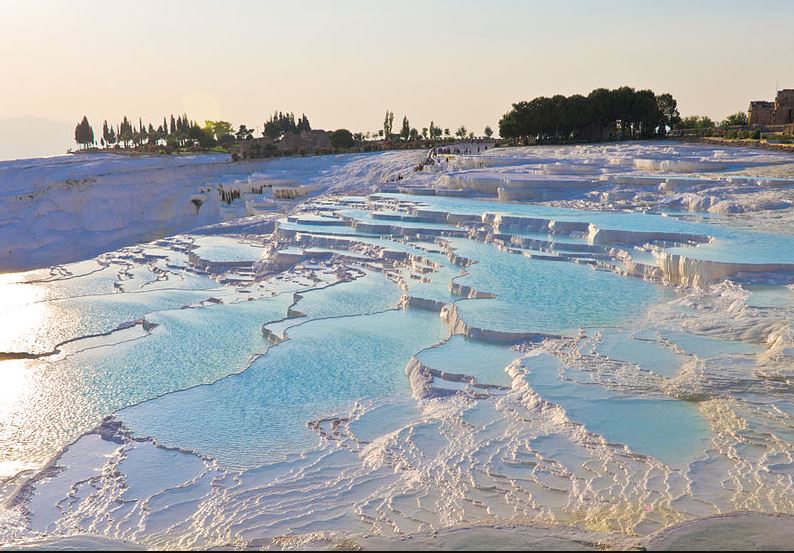
Pamukkale is a remarkable destination that combines natural beauty, history, and wellness. With its stunning travertine terraces and rich cultural heritage, it offers a unique experience for all visitors. Whether you seek relaxation in the thermal waters or explore ancient ruins, Pamukkale has something for everyone.
Table of Contents
Pamukkale: A Natural Wonder in Turkey
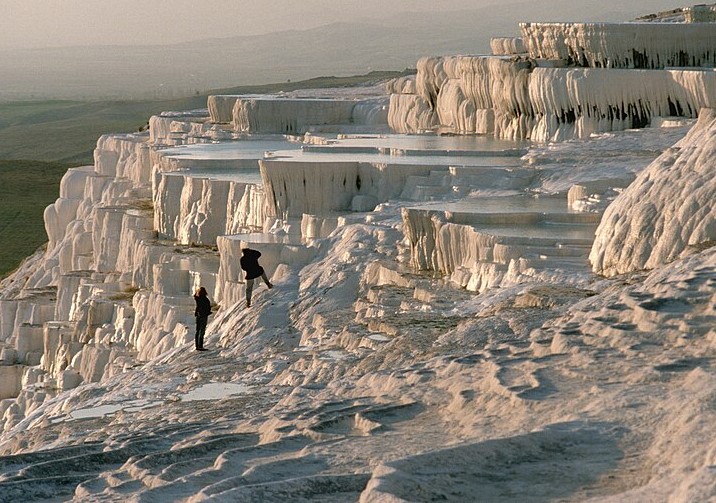
Pamukkale is a popular tourist destination in Turkey. It is famous for its white travertine terraces and thermal springs. The site attracts many visitors every year. Pamukkale means “Cotton Castle” in Turkish. The name reflects the stunning appearance of the terraces.
Pamukkale Location
Pamukkale is located in the Denizli Province of southwestern Turkey. It lies near the ancient city of Hierapolis. The area is easy to reach from major cities like Izmir and Antalya.
How to Get to Pamukkale
Traveling to Pamukkale is simple. Visitors can drive or take a bus from nearby cities. The nearest airport is in Denizli. From the airport, buses and taxis can take you to Pamukkale. The journey from Denizli to Pamukkale takes about 30 minutes.
Pamukkale Attractions
Pamukkale has many attractions for visitors:
- Travertine Terraces: The white terraces are made of calcium deposits from the hot springs. They create beautiful pools of blue water.
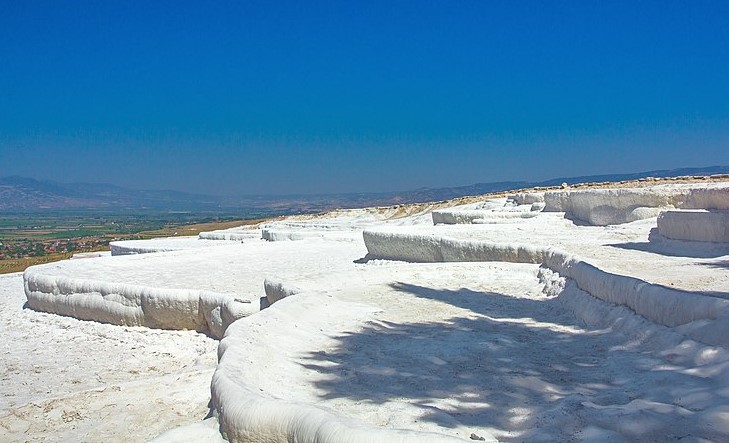
- Hierapolis: This ancient city is near Pamukkale. It has ruins of temples, theaters, and baths. The ancient city is also a UNESCO World Heritage site.
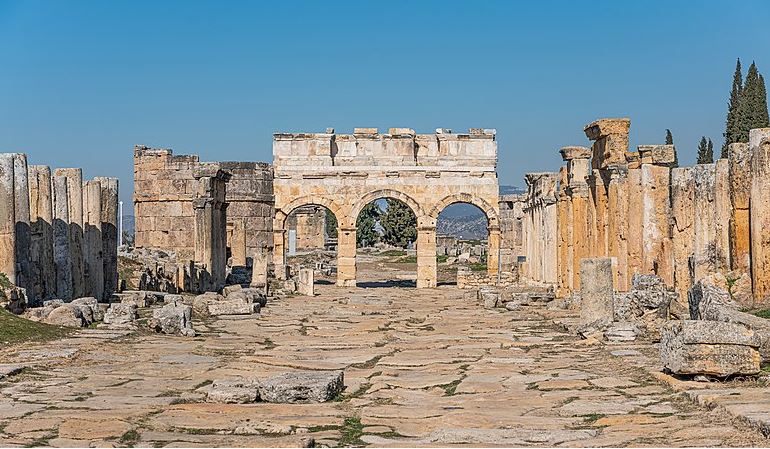
- Thermal Springs: The warm mineral-rich waters are known for their healing properties. Many people visit to relax and soak in the pools.
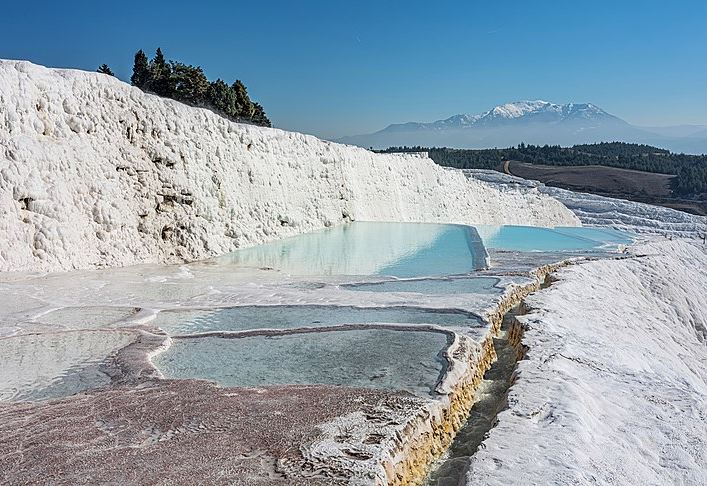
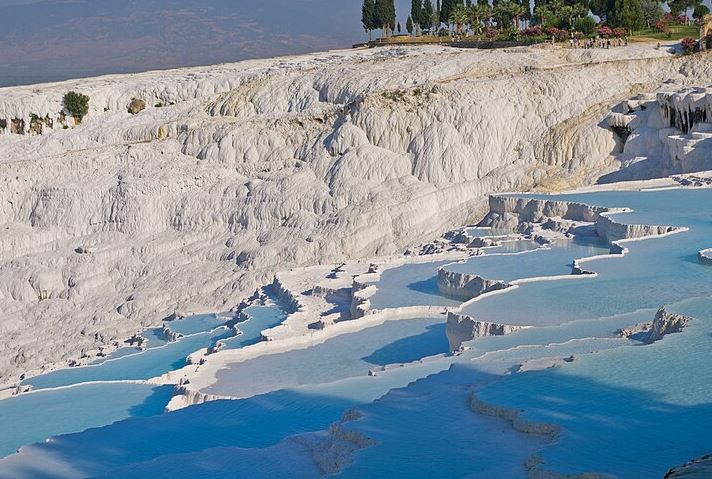
- Cleopatra’s Pool: This is a famous thermal pool in Hierapolis. It is said that Cleopatra swam here. The pool is filled with ancient columns and artifacts.
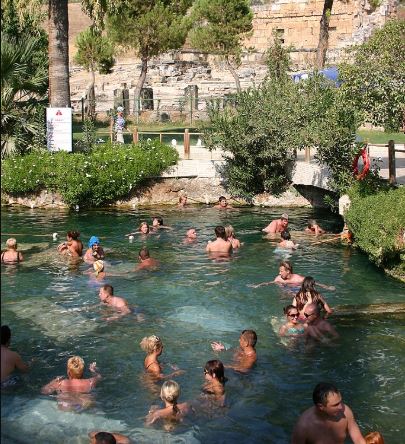
Why Visit Pamukkale?
Visiting Pamukkale is a unique experience. The natural beauty of the terraces is breathtaking. The warm waters are relaxing and enjoyable. The historical ruins of Hierapolis add cultural value to the visit. People come for the scenery, the history, and the health benefits of the springs.
Legends and History
Pamukkale has a rich history. The area has been used since ancient times. Hierapolis was founded in the 2nd century BC. It was a spa city known for its thermal baths. The waters were believed to have healing powers. Many people traveled to Hierapolis for health and wellness.
Interesting Facts About Pamukkale
- Formation: The travertine terraces were formed over thousands of years. Water from the hot springs flows down the mountains, leaving calcium deposits behind.
- Temperature: The thermal waters are around 35 to 100 degrees Celsius. Visitors can enjoy different temperatures in various pools.
- Biodiversity: The area is home to unique plants and animals. The warm climate supports diverse wildlife.
- UNESCO Site: Pamukkale and Hierapolis were designated as a UNESCO World Heritage site in 1988.
Architecture and Design
The architecture in Hierapolis is impressive. The ancient city features:
- Theater: The ancient theater has a capacity of about 10,000 spectators. It is well-preserved and offers beautiful views.
- Temples: There are several temples dedicated to gods and goddesses. They showcase the architectural style of the time.
- Necropolis: This ancient burial ground contains many tombs and sarcophagi. It reflects the mourning practices of the ancient people.
Nearby Attractions
There are many attractions near Pamukkale:
- Karahayit: This nearby village is famous for its red thermal waters. The mineral content gives the water its unique color.
- Laodicea on the Lycus: This ancient city is close to Pamukkale. Visitors can explore the ruins of temples, theaters, and a stadium.
- Denizli: The city of Denizli offers shopping and dining options. It is a great place to experience local culture.
Best Time to Visit Pamukkale
The best time to visit Pamukkale is during the spring and autumn months. The weather is mild, making it comfortable to explore. Summer can be very hot, while winter can bring rain.
Dress Code for Pamukkale
There is no strict dress code for visiting Pamukkale. However, it is advisable to wear:
- Comfortable Shoes: The terrain can be uneven, so sturdy footwear is important.
- Swimsuit: If you plan to swim in Cleopatra’s Pool or the thermal springs, bring a swimsuit.
- Light Clothing: Dress in light, breathable clothing during the warmer months.
Opening Hours
Pamukkale is open to visitors year-round. The opening hours can vary depending on the season. Typically, it opens at 6:30 AM and closes at 8 PM in the summer. In winter, the hours may be shorter.
Entrance Fees
There is an entrance fee to visit Pamukkale and Hierapolis. The fee is reasonable, allowing access to both the travertine terraces and the ancient city. Children and students may receive discounts.
Pamukkale Museum Pass: Valid or Not
The Museum Pass Turkey is valid for entry to Pamukkale and Hierapolis. This pass allows unlimited access to many museums and archaeological sites across Turkey. It can be a good option for those planning to visit multiple locations.
Tips for Visitors
Here are some tips for visiting Pamukkale:
- Arrive Early: Get there early to avoid crowds and enjoy the terraces peacefully.
- Stay Hydrated: Bring water, especially if you plan to explore the area.
- Respect the Environment: Do not walk on the terraces. Follow the designated paths to protect the natural formations.
- Bring a Camera: The views are stunning, and you will want to capture the beauty of Pamukkale.
- Relax: Take your time to enjoy the thermal springs and the scenery.
FQA
How do I get to Pamukkale?
You can drive, take a bus, or fly to Denizli and then take local transport to Pamukkale.
What is the best time to visit Pamukkale?
The best time to visit is in spring (April to June) or autumn (September to November) when the weather is mild.
Is there an entrance fee for Pamukkale?
Yes, there is an entrance fee to access the travertine terraces and Hierapolis.
Can I swim in the thermal pools?
Yes, visitors can swim in Cleopatra’s Pool and some other thermal areas.
Are there accommodations near Pamukkale?
Yes, there are many hotels and guesthouses in Pamukkale and nearby Denizli.
